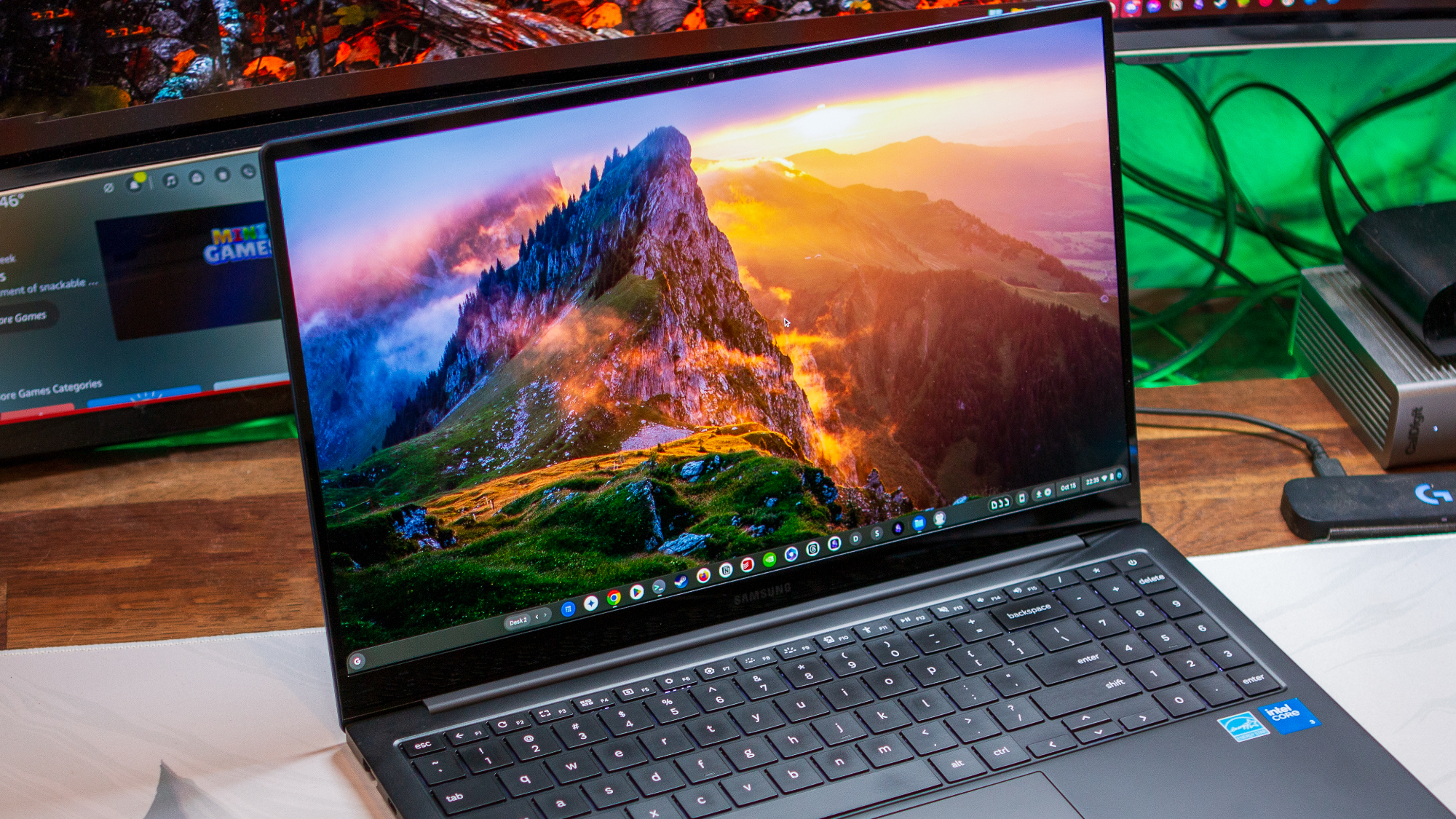

Beyond the Alphabet is a weekly column that focuses on the tech world both inside and out of the confines of Mountain View.
After Apple recently announced its latest M4-powered series of MacBook Pro's, the company made another change that was unexpected. Every current MacBook in Apple's lineup now ships with 16GB of RAM as a base, an upgrade from the previous minimum of 8GB.
Originally, I was going to compare the MacBook Air to the current crop of Chromebooks until I realized that you can't get a new MacBook for less than $1,100. Meanwhile, the most expensive Chromebook is the new Samsung Galaxy Chromebook Plus, which is $400 cheaper. Yes, I know there are still a few HP Dragonfly Pro Chromebooks floating around, but those aren't as widely available and are clearly being phased out.
After some prodding in a meeting, I turned my attention to a comparison that does make sense: Chromebook vs. iPad.
Chromebook vs. iPad: Price
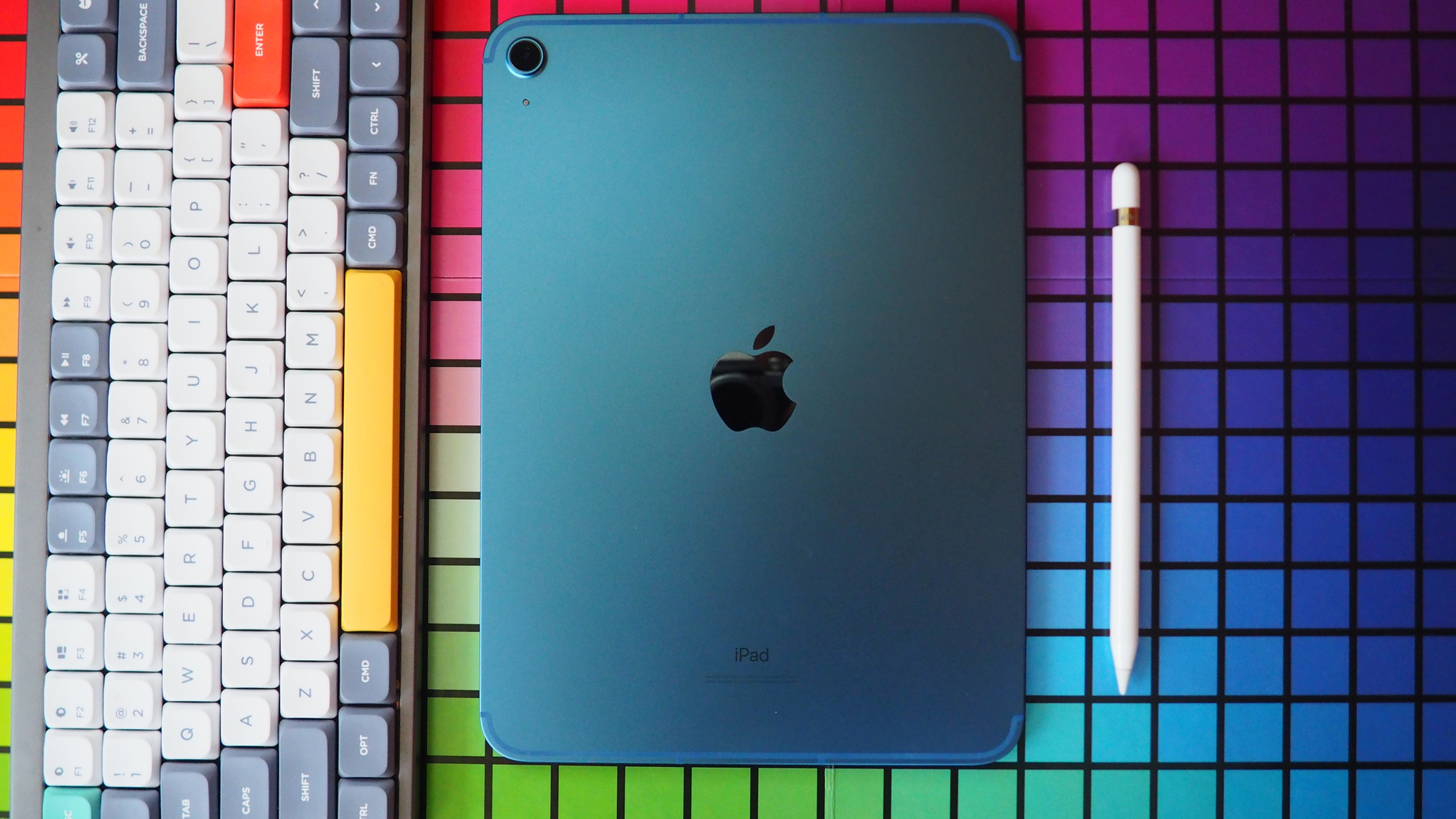
Currently, there are six different iPad models to choose from, starting with the iPad (10th generation) for $349 and going all the way up to the M4 12.9-inch iPad Pro for $1,299. Meanwhile, the cheapest Chromebook that's been released in 2024 is the HP Chromebook 14-inch, which retails for $249.
From there, we have a variety of options at different price points, and while the majority of them are laptops, there are a couple of tablets thrown into the mix. These include the likes of the ASUS Chromebook CM30, and more recently, the Lenovo Chromebook Duet 11.
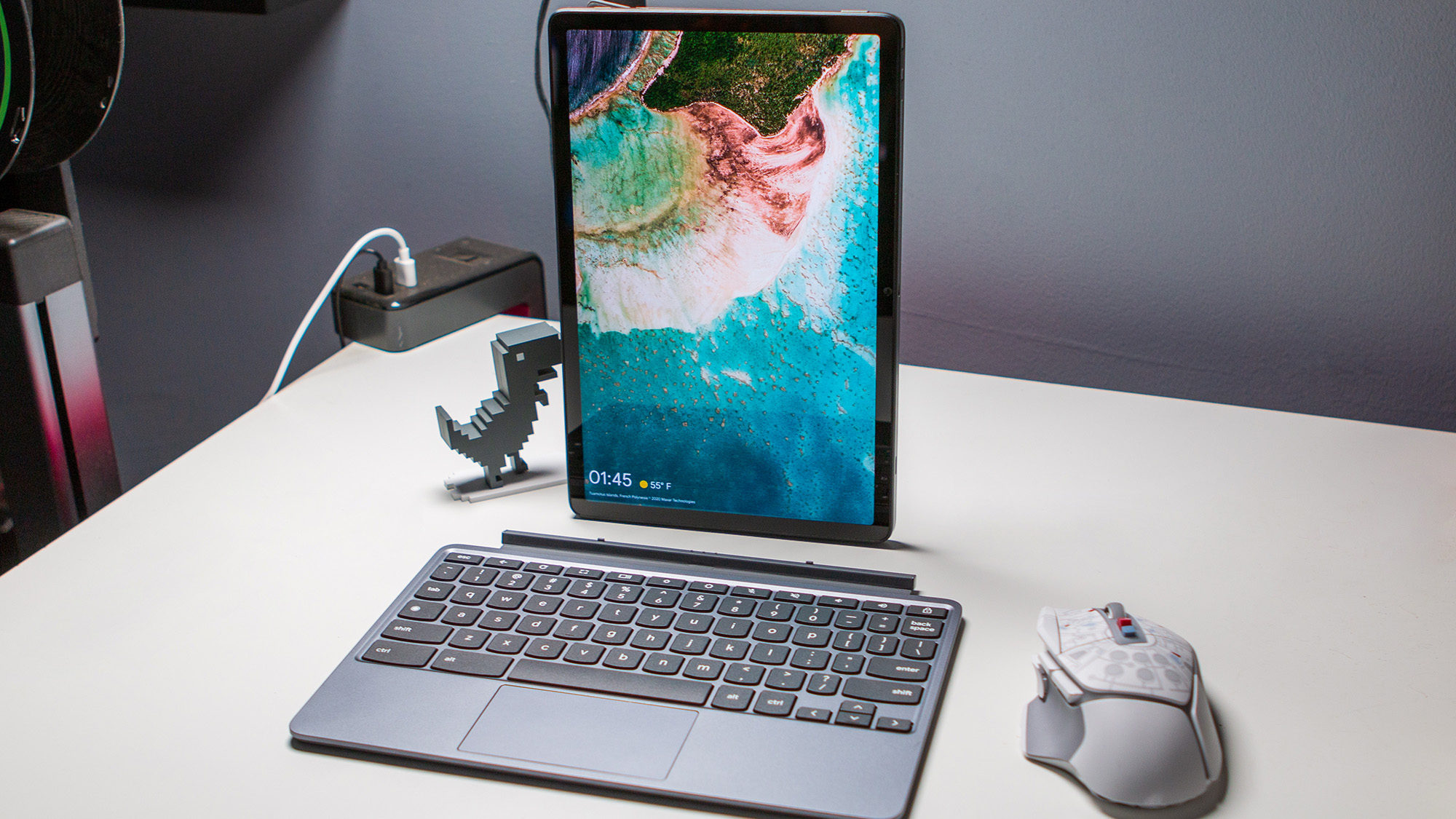
While both of these are tablets, ASUS and Lenovo include a keyboard case in the box. In doing so, it removes any potential stress and additional cost for those who want a true 2-in-1 device. On the other hand, no matter what iPad you're considering, the only other thing that comes in the box is a charging cable.
Making matters worse for the iPad is that if you want to go with first-party accessories, Apple's Magic Keyboard Folio is priced at $249. Plus, if you want a stylus, tack on another $79, bringing the grand total to about $680.
That immediately puts the "cheapest" iPad in the same price bracket as the Galaxy Chromebook Plus and Chromebook Plus Spin 714. It is also almost $300 more expensive than the Lenovo Chromebook Duet 11.
And we haven't even talked about the hardware or specs.
Chromebook vs. iPad: Hardware & Specs
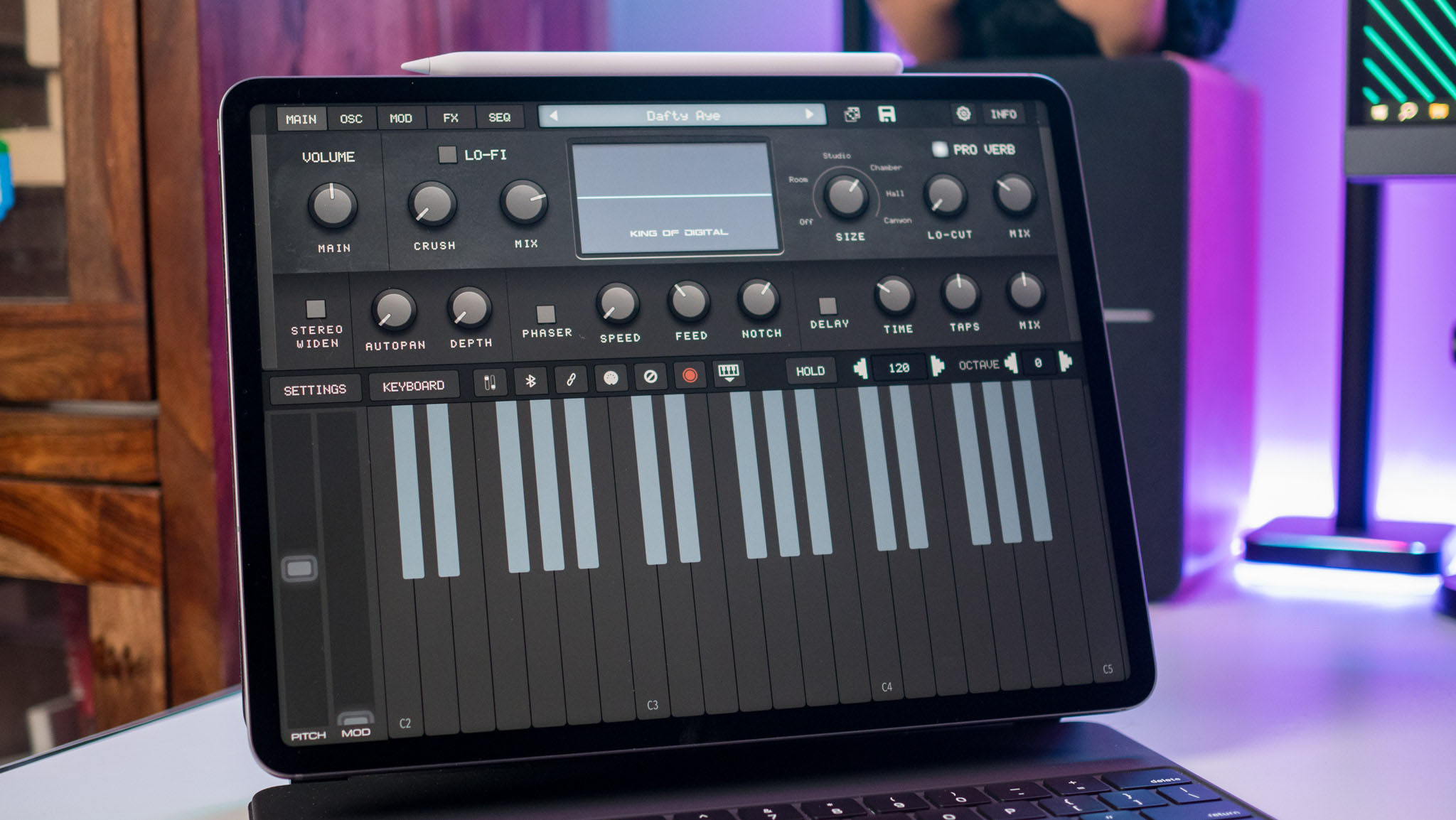
So, what are you getting with the base model iPad for $349? It's powered by the A14 Bionic SoC, which debuted with the iPhone 12 and iPad Air in 2020. This is paired with 4GB of RAM and either 128GB or 256GB of storage, and if you want to use it anywhere, there are Cellular options available.
I'm not going to sugarcoat anything here, but there's a good reason why Apple is able to "get away" with using a four-year-old processor without facing much backlash. Since Apple controls the entire "stack," it's able to better optimize the software and hardware, when it relies on older processors. This is also why Apple was able to maintain its position as a leader in the industry when it comes to providing software updates for longer than the competition.

As for Chromebooks, the aforementioned ASUS Chromebook CM30 is powered by the MediaTek Kompanio 520. It also sports 4GB of RAM and 64GB of non-upgradeable storage. But as I mentioned before, ASUS includes the detachable keyboard folio case in the box, which is already a huge benefit, even if you don't plan to use it all that much.
Performance is where things take a sharp turn. On Geekbench, the Kompanio 520 offers a single-core score of 510 and a multi-core score of 1532. Despite being four years old, the A12 Bionic achieved scores of 1590 and 4247, respectively. Let me put it this way: the cheapest iPad is closer to the Intel-powered Galaxy Chromebook Plus in terms of performance.
It's not even close; the iPad wins by a landslide here.
Chromebook vs. iPad: Software
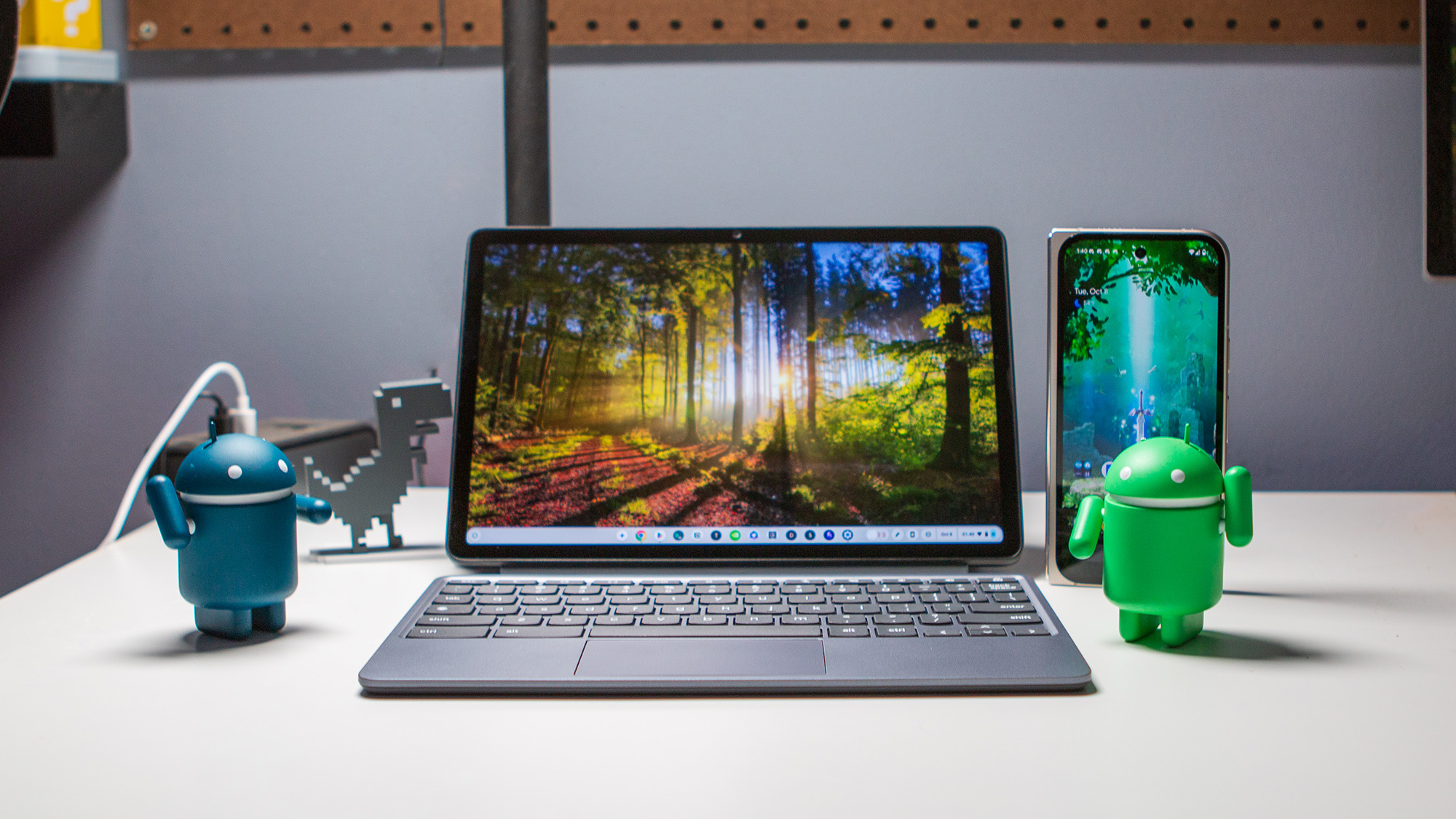
Software is the key to everything, and this is where a sub-$300 Chromebook outshines even a $1300 iPad. With a Chromebook, you not only have access to the ever-growing world of web apps and extensions, but the Play Store is also just a click away. Not to mention that there's an even bigger repository of apps at your disposal if you feel comfortable enough to enable Linux support.
On an iPad, everything is powered by either the App Store or Safari, and there is just a little bit of wiggle room for anything else. While you can use Chrome or Firefox on an iPad, you won't find any extension support, and for whatever reason, web apps don't always feel as fluid as they do on a Chromebook.
While important, I'd argue that usability is even more important, especially when it comes to things like using more than one app at a time. The iPad is superb if you're trying to stay focused on one app, but it immediately begins to fall short when you want to toss another app into the mix.
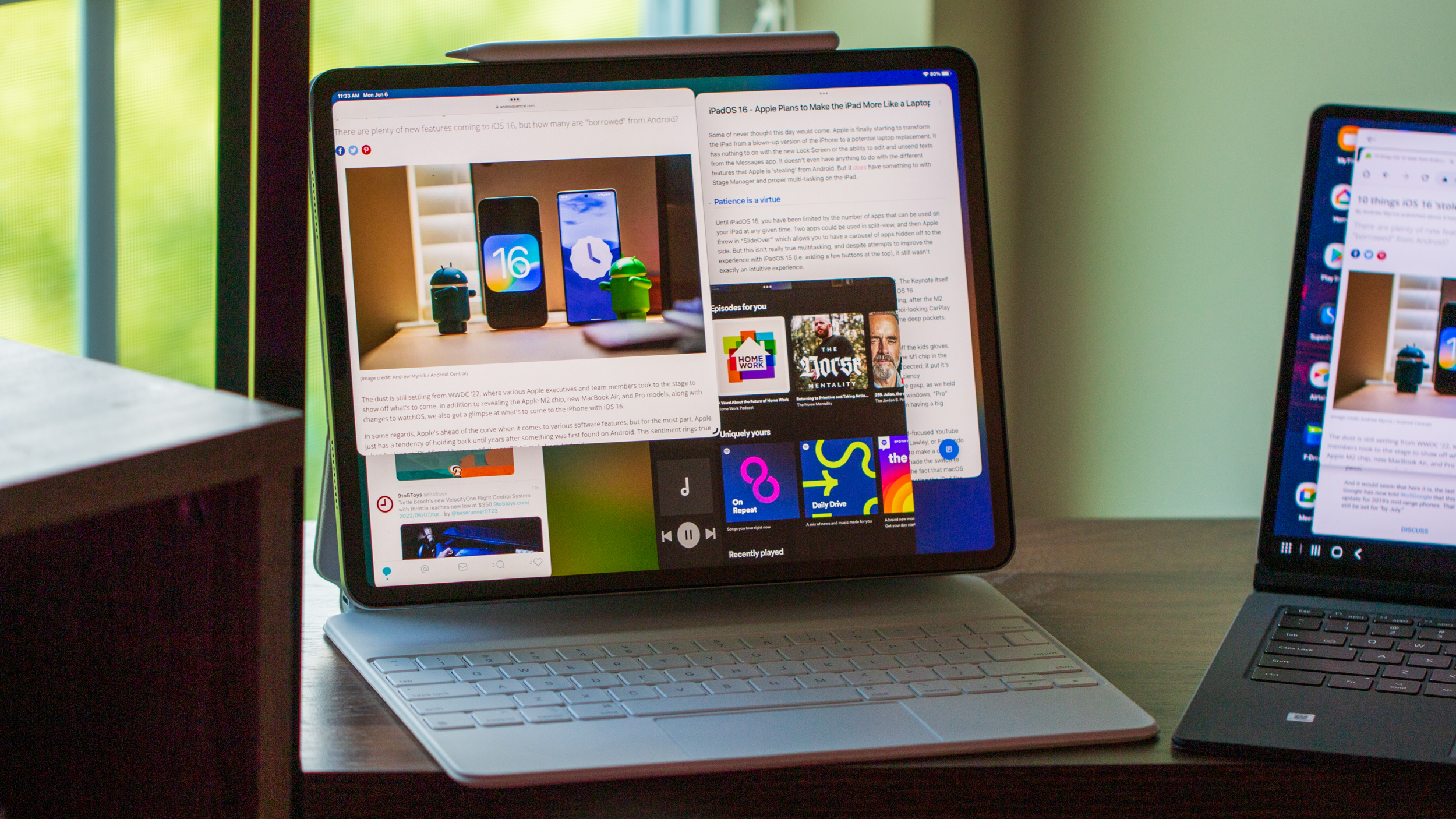
"But what about Stage Manager?" You might be asking, and I'm glad you did. When enabled, it lets you use up to four different apps at the same time. Allowing you to resize and move them around with relative ease. There's even a slide-out "dock" of sorts, letting you basically work within different spaces that are comprised of different apps.
Technically another app can be used, provided that you can remember that the Slide Over is at your disposal or even how to use it. But it's cumbersome at best, and downright useless more often than not.
None of that is a problem with a Chromebook, as it works just like any other desktop operating system. The only difference comes when using either a ChromeOS tablet or a Chromebook with a convertible form factor. When doing so, it's more similar to using any Android tablet or iPad, with your app windows locked to a few different layouts.
However, I'd still argue that Google's implementation is still a bit better. Instead of trying to guess where to put app windows, you can just swipe down from the top of the screen and pick from a few different layouts. These include being able to put an app off to the side and slide it back into view.
Chromebooks are better and more versatile than ever

This might just sound like a puff piece for Chromebooks, and to a certain extent, it kind of is. But it's just because I feel as though we're finally moving away from the days of seeing a million different cheap Chromebooks that are underpowered or just bad. In years past, I would have likely recommended an iPad to just about anyone who asked, regardless of how they planned to use it.
However, the landscape has shifted quite dramatically for Chromebooks. For one, with Chromebook Plus, you know exactly what the minimum specs are, so there's no need to worry about compromising. Regardless of whether you want a tablet or a laptop, you have options to choose from, both of which are going to be either in-line or less expensive than what you would spend on an iPad.







